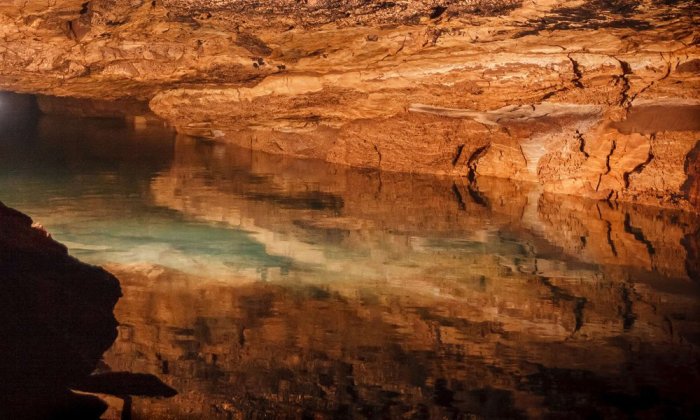It is far from preposterous to suggest that the fate of the human race is inextricably linked to the fate of the Earth’s groundwaters.
How much groundwater exists and exactly where is it located? How do extreme weather events and climate change impact groundwater resources? In this Effective Policy Learning piece, first published in the journal Harvard Data Science Review, mathematician and engineer Nick Dudley Ward argues that having reliable, accurate, and timely data about valuable groundwater resources will be essential to our ability to respond effectively to climate change.
The presence of groundwater has sustained humanity and agricultural development for millennia. During the 16th century, Leonardo da Vinci presented numerous theories on how the Earth came to be in his “Codex Leicester,” including the most complete record of his reflections on the movement of water. In particular, he was interested in the mechanisms of the movement of water underground, which he supposed moved in a network of veins with surface emanations such as springs, a hugely important source of fresh water at the time. He correctly surmised that there is a great deal of fresh water hidden from sight. Indeed, of the Earth’s fresh water in liquid form, over 95 percent currently is estimated to reside in the ground.
In more recent times, enormous aquifer systems like the Great Artesian Basin in Australia and the aquifers of the Midwest of the United States have supported the inexorable march of agricultural development throughout the 19th and 20th centuries. These enormous aquifers have played the role of global water reinsurer during times of drought. For example, in recent years, California has relied on pumping huge volumes of groundwater to sustain agriculture over multiple years of drought. In a recent study, the authors observe that groundwater supplies two-thirds of California’s water during droughts compared to a third in non-drought conditions. Other countries like the remote Kingdom of Tonga rely existentially on extremely shallow floating groundwater reserves surrounded by ocean and critically exposed to sea-level rise.
…lack of data has been harmful in forming clear public policies that can help communities and industries respond effectively to climate change.
Although many of Earth’s major aquifers are severely depleted, it is hard not to feel that groundwater will become ever more important in the context of climate change. However, the amount of groundwater hidden in Earth’s aquifers remains a huge unknown. We only see the impacts of depletion on a large scale through declining water levels in wells or earth-scale geophysical studies. This lack of data has been harmful in forming clear public policies that can help communities and industries respond effectively to climate change. From a policy perspective, groundwater management is often opaque. As a recent article in The New York Times highlights, there is a lack of consistent regulation between states and within states. In many cases, access to groundwater is simply unregulated or lost in a tangled web of regulations — effectively a free-for-all. This is exacerbated by the lack of basic data, such as not knowing how many wells there are, let alone how much water is being pumped.
One of the problems associated with detecting changes in groundwater state is that aquifers do not respond in the attention-grabbing way that surface waters do during extreme weather events, when the impacts of floods or droughts are directly observable and immediate, fueling the collective narrative about climate change. Nevertheless, climate models tell us much less about changes in extreme events than they do about changes in the mean state. Even if the current state of groundwater development were to reach a steady state, it is very hard to see how the movement of water in the ground will respond to changes in climatic patterns and, especially, in what manner the greater incidence of extreme weather events will impact the movement of the Earth’s groundwater resources.
Much of the contemporary narrative about data is about having open access to data on appropriately managed databases, and tools to interrogate the data; that is, making data available. In New Zealand, for example, which has a data strategy roadmap, big databases are key agenda topics in government. However, there is less clarity on how certain databases would actually be populated. For example, in the case of groundwater, often data simply does not exist — or is so sparse as not to merit the title of database.
In spite of the lack of data, in recent years shallow groundwater systems have begun to […]
Full article: thereader.mitpress.mit.edu

